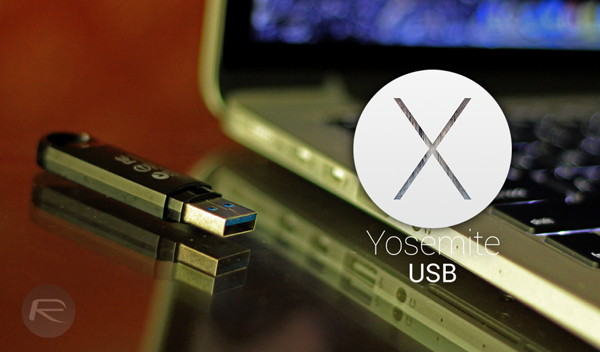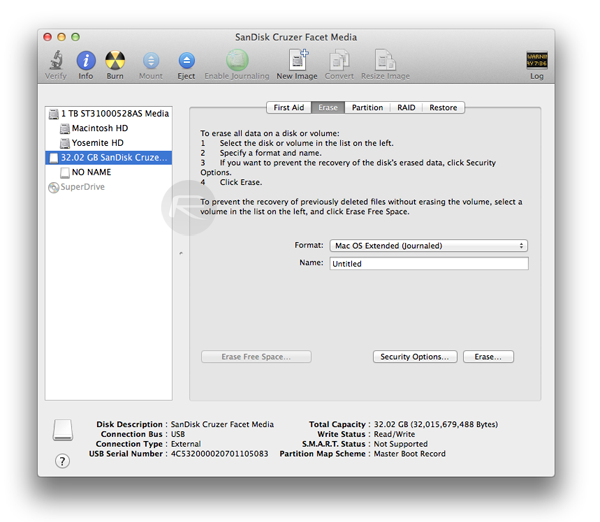You can use an external drive or secondary volume as a startup disk from which to install the Mac operating system. Bootable USB Installers for OS X Mavericks, Yosemite, El Capitan, and Sierra. First, review this introductory article: Create a bootable installer for macOS. Second, see this How To outline for creating a bootable El Capitan installer. Simply replace the Terminal command with the one from the preceding article by copying it into the Terminal.
By Michael Argentini
Managing Partner, Technology and Design
How do you erase your Mac hard drive and install OS X Yosemite without a startup disk? Normally the answer would be to boot into recovery mode. But what if you need to partition the hard drive, wiping the recovery partition? You need a bootable OS X Yosemite installer. Here's how to make one using Apple's built-in boot drive creation tool.
Create Install Media Yosemite Free
What You Need
- The 5GB OS X Yosemite installer app that downloads into your Applications folder when you first install it via the Mac App Store. The file name is Install OS X Yosemite. After you upgrade to Yosemite, this file is deleted. So you have to quit the installer once it appears in order to keep this file.
- A flash drive, external hard disk, SD card, or the like, with at least 8GB of capacity.
- Your Mac user account must be an Administrator. If it isn't, go to Users & Groups in System Preferences and assign Administrator to your user account. You can change it back to a standard user when you're finished. You can also sign in to your Mac as the administrator to create the bootable drive.
Step 1: Format Your Drive
First, you must partition and erase the drive so that it can be bootable. To do this, launch Disk Utility and choose the destination drive in the drive list (left column). On the right, in the Erase tab, choose to format the drive as Mac OS Extended (Journaled). These are the defaults, so just confirm the settings.
Next go to the Partition tab and under Partition Layout choose '1 Partition' in the dropdown menu. Change the name from 'Untitled 1' to 'Untitled'. This is so that the Terminal command below will find the drive. Once the process is complete, the drive name will be 'Install OS X Yosemite'.
Click the 'Options' button. In the dialog that appears, choose 'GUID Partition Table' as the partition scheme, then click 'OK'. Again, this is the default, so just confirm the setting.
Finally, click 'Apply' to confirm the settings and prepare the drive.

Step 2: Make the Drive a Yosemite Boot Installer
In a single command you'll create the bootable install drive. Pretty sweet! To do this, launch Terminal and enter the following command. Note, this assumes that you haven't moved the installer out of your Applications folder. If you have, simply replace '/Applications' with the location of the installer:

The sudo command will ask for your password. As you type it will not appear. This is normal. Just enter it and press return to create the boot drive.

During installation, you'll see a progression of status messages.
Wait until you see a status of 'Done.' When you do, you can safely eject the drive and quit Terminal.
Install Yosemite From Usb
Step 3: Start Up from the Install Drive

If you open the new bootable drive in the Finder, you'll notice that it appears empty, other than the Install OS X Yosemite app. No worries. The boot files are hidden, and the installer app allows you to upgrade without booting from the drive if you don't need to.
To boot from this new installer, shut down the Mac, plug in the bootable drive, and hold down the option key while powering back up. You should eventually see a series of bootable drives. Click on the one named 'Install OS X Yosemite' and press the return key.
Where to next?
| Авто | Видео-блоги | ДТП, аварии | Для маленьких | Еда, напитки |
|---|---|---|---|---|
| Животные | Закон и право | Знаменитости | Игры | Искусство |
| Комедии | Красота, мода | Кулинария, рецепты | Люди | Мото |
| Музыка | Мультфильмы | Наука, технологии | Новости | Образование |
| Политика | Праздники | Приколы | Природа | Происшествия |
| Путешествия | Развлечения | Ржач | Семья | Сериалы |
| Спорт | Стиль жизни | ТВ передачи | Танцы | Технологии |
| Товары | Ужасы | Фильмы | Шоу-бизнес | Юмор |
sudo /Applications/Install OS X Yosemite.app/Contents/Resources/createinstallmedia --volume /Volumes/Untitled --applicationpath /Applications/Install OS X Yosemite.app --nointeraction
You will need administrator privilages to perform this and a USB Flash drive or SD card with at least 8GB capacity.
Видео Mac OS X Yosemite - How To Create A Bootable Install Drive канала The Apple Review
Mac Yosemite Install
